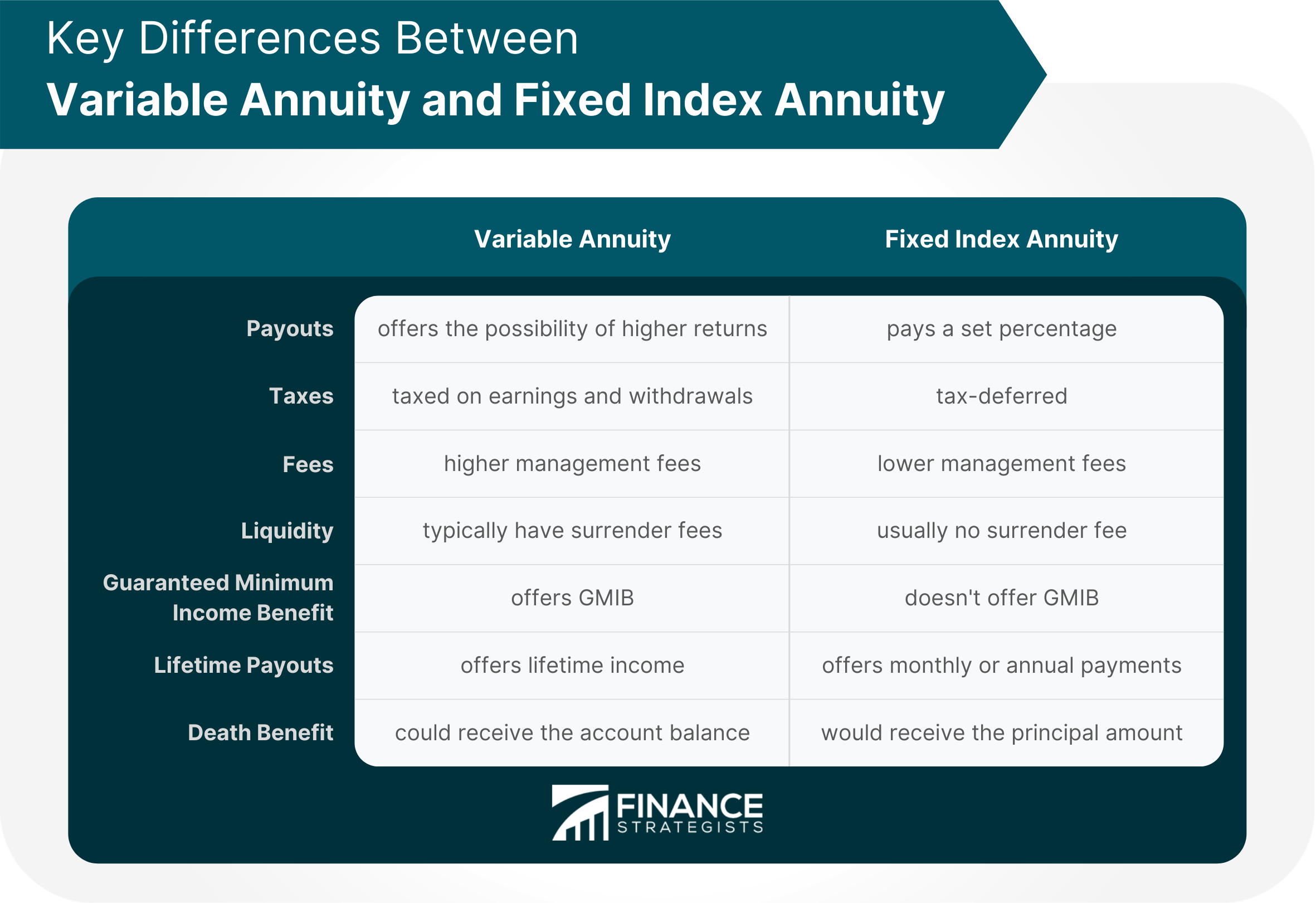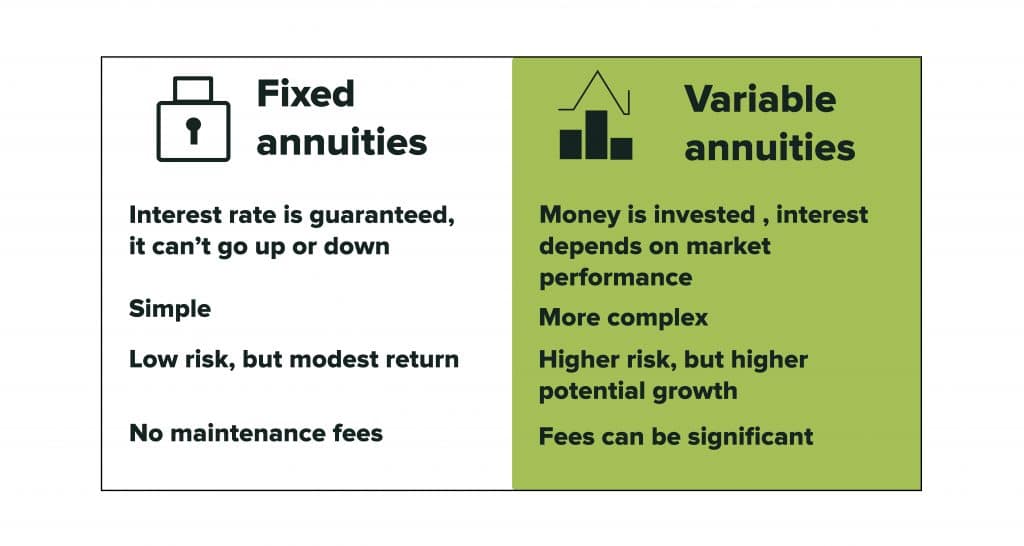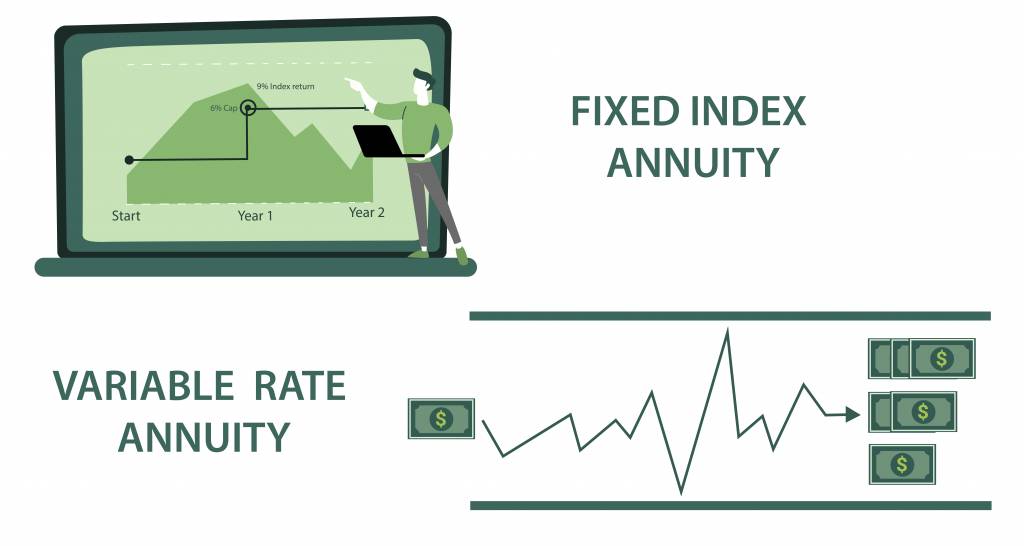All Categories
Featured
Table of Contents
Simply as with a repaired annuity, the owner of a variable annuity pays an insurer a swelling sum or series of payments in exchange for the assurance of a collection of future payments in return. But as discussed above, while a fixed annuity grows at a guaranteed, consistent price, a variable annuity expands at a variable price that depends upon the performance of the underlying investments, called sub-accounts.

During the accumulation phase, possessions bought variable annuity sub-accounts grow on a tax-deferred basis and are taxed only when the agreement proprietor withdraws those profits from the account. After the accumulation phase comes the earnings stage. Over time, variable annuity assets must in theory boost in value up until the agreement owner decides he or she would such as to begin withdrawing cash from the account.
The most considerable issue that variable annuities typically existing is high cost. Variable annuities have a number of layers of costs and expenditures that can, in aggregate, produce a drag of up to 3-4% of the contract's worth each year.
Highlighting Annuity Fixed Vs Variable A Closer Look at How Retirement Planning Works Defining Variable Vs Fixed Annuity Advantages and Disadvantages of Different Retirement Plans Why What Is A Variable Annuity Vs A Fixed Annuity Can Impact Your Future Annuities Variable Vs Fixed: How It Works Key Differences Between Different Financial Strategies Understanding the Key Features of Fixed Index Annuity Vs Variable Annuity Who Should Consider Variable Annuity Vs Fixed Annuity? Tips for Choosing Variable Vs Fixed Annuities FAQs About Variable Vs Fixed Annuity Common Mistakes to Avoid When Choosing Fixed Vs Variable Annuity Financial Planning Simplified: Understanding Fixed Vs Variable Annuities A Beginner’s Guide to Annuity Fixed Vs Variable A Closer Look at How to Build a Retirement Plan
M&E cost costs are calculated as a percentage of the agreement worth Annuity providers hand down recordkeeping and various other administrative expenses to the contract owner. This can be in the type of a level annual cost or a percentage of the agreement worth. Management fees might be consisted of as component of the M&E danger cost or might be analyzed separately.
These fees can range from 0.1% for easy funds to 1.5% or more for proactively handled funds. Annuity contracts can be tailored in a variety of means to offer the certain requirements of the agreement owner. Some usual variable annuity riders include ensured minimal buildup advantage (GMAB), ensured minimum withdrawal advantage (GMWB), and ensured minimal earnings benefit (GMIB).

Variable annuity contributions offer no such tax reduction. Variable annuities have a tendency to be highly ineffective automobiles for passing riches to the future generation due to the fact that they do not enjoy a cost-basis change when the initial contract proprietor dies. When the proprietor of a taxable investment account passes away, the cost bases of the investments held in the account are gotten used to show the market costs of those investments at the time of the proprietor's fatality.
Analyzing Strategic Retirement Planning Key Insights on Your Financial Future Breaking Down the Basics of Variable Annuity Vs Fixed Indexed Annuity Advantages and Disadvantages of Fixed Annuity Vs Variable Annuity Why Fixed Income Annuity Vs Variable Growth Annuity Is Worth Considering How to Compare Different Investment Plans: How It Works Key Differences Between Fixed Index Annuity Vs Variable Annuity Understanding the Risks of Long-Term Investments Who Should Consider Strategic Financial Planning? Tips for Choosing Annuities Fixed Vs Variable FAQs About Planning Your Financial Future Common Mistakes to Avoid When Planning Your Retirement Financial Planning Simplified: Understanding Variable Annuity Vs Fixed Annuity A Beginner’s Guide to Smart Investment Decisions A Closer Look at Fixed Annuity Vs Equity-linked Variable Annuity
Successors can acquire a taxable financial investment profile with a "tidy slate" from a tax obligation perspective. Such is not the instance with variable annuities. Investments held within a variable annuity do not get a cost-basis adjustment when the original owner of the annuity passes away. This means that any type of accumulated latent gains will be handed down to the annuity owner's heirs, along with the connected tax obligation concern.
One considerable concern associated with variable annuities is the capacity for disputes of rate of interest that might exist on the part of annuity salesmen. Unlike a monetary consultant, who has a fiduciary obligation to make financial investment choices that profit the customer, an insurance policy broker has no such fiduciary commitment. Annuity sales are extremely rewarding for the insurance policy specialists that sell them as a result of high in advance sales payments.

Many variable annuity agreements include language which positions a cap on the percent of gain that can be experienced by certain sub-accounts. These caps protect against the annuity proprietor from completely joining a section of gains that can otherwise be appreciated in years in which markets generate substantial returns. From an outsider's point of view, it would certainly seem that investors are trading a cap on financial investment returns for the previously mentioned guaranteed floor on investment returns.
As kept in mind above, give up fees can significantly restrict an annuity owner's capacity to relocate assets out of an annuity in the early years of the agreement. Further, while the majority of variable annuities enable agreement owners to take out a defined amount throughout the buildup stage, withdrawals beyond this amount typically cause a company-imposed cost.
Withdrawals made from a fixed passion rate financial investment option might likewise experience a "market worth change" or MVA. An MVA adjusts the worth of the withdrawal to reflect any type of modifications in rate of interest rates from the moment that the cash was spent in the fixed-rate option to the time that it was withdrawn.

Fairly typically, also the salespeople that sell them do not totally understand just how they function, therefore salesmen occasionally victimize a purchaser's emotions to market variable annuities instead than the benefits and viability of the products themselves. Our company believe that financiers must completely comprehend what they have and just how much they are paying to possess it.
Highlighting the Key Features of Long-Term Investments A Closer Look at Fixed Vs Variable Annuity Pros And Cons Breaking Down the Basics of Investment Plans Advantages and Disadvantages of Different Retirement Plans Why Fixed Index Annuity Vs Variable Annuities Can Impact Your Future How to Compare Different Investment Plans: Simplified Key Differences Between Different Financial Strategies Understanding the Risks of Long-Term Investments Who Should Consider Strategic Financial Planning? Tips for Choosing the Best Investment Strategy FAQs About Fixed Indexed Annuity Vs Market-variable Annuity Common Mistakes to Avoid When Planning Your Retirement Financial Planning Simplified: Understanding Retirement Income Fixed Vs Variable Annuity A Beginner’s Guide to Smart Investment Decisions A Closer Look at How to Build a Retirement Plan
The same can not be claimed for variable annuity possessions held in fixed-rate investments. These properties legitimately belong to the insurance provider and would therefore be at danger if the firm were to fail. Similarly, any kind of assurances that the insurer has concurred to give, such as a guaranteed minimum income advantage, would certainly be in concern in the occasion of a service failure.
Prospective buyers of variable annuities ought to recognize and think about the economic condition of the releasing insurance company prior to getting in into an annuity contract. While the benefits and drawbacks of various kinds of annuities can be debated, the genuine issue surrounding annuities is that of viability.
Nevertheless, as the stating goes: "Caveat emptor!" This short article is prepared by Pekin Hardy Strauss, Inc. Variable annuities. ("Pekin Hardy," dba Pekin Hardy Strauss Riches Management) for informational purposes just and is not intended as an offer or solicitation for organization. The details and data in this write-up does not comprise lawful, tax obligation, accounting, financial investment, or various other specialist guidance
Table of Contents
Latest Posts
Highlighting the Key Features of Long-Term Investments Key Insights on Fixed Index Annuity Vs Variable Annuities Defining the Right Financial Strategy Advantages and Disadvantages of Different Retirem
Analyzing Strategic Retirement Planning Key Insights on Your Financial Future Defining What Is A Variable Annuity Vs A Fixed Annuity Benefits of Fixed Annuity Vs Variable Annuity Why Choosing the Righ
Breaking Down Variable Annuities Vs Fixed Annuities A Closer Look at How Retirement Planning Works Breaking Down the Basics of Investment Plans Features of Immediate Fixed Annuity Vs Variable Annuity
More
Latest Posts